
Road-Trip North America’s Alaska Highway
Relax in hot springs, spot bison, and hike through scenic wilderness on this epic drive from British Columbia to Alaska.
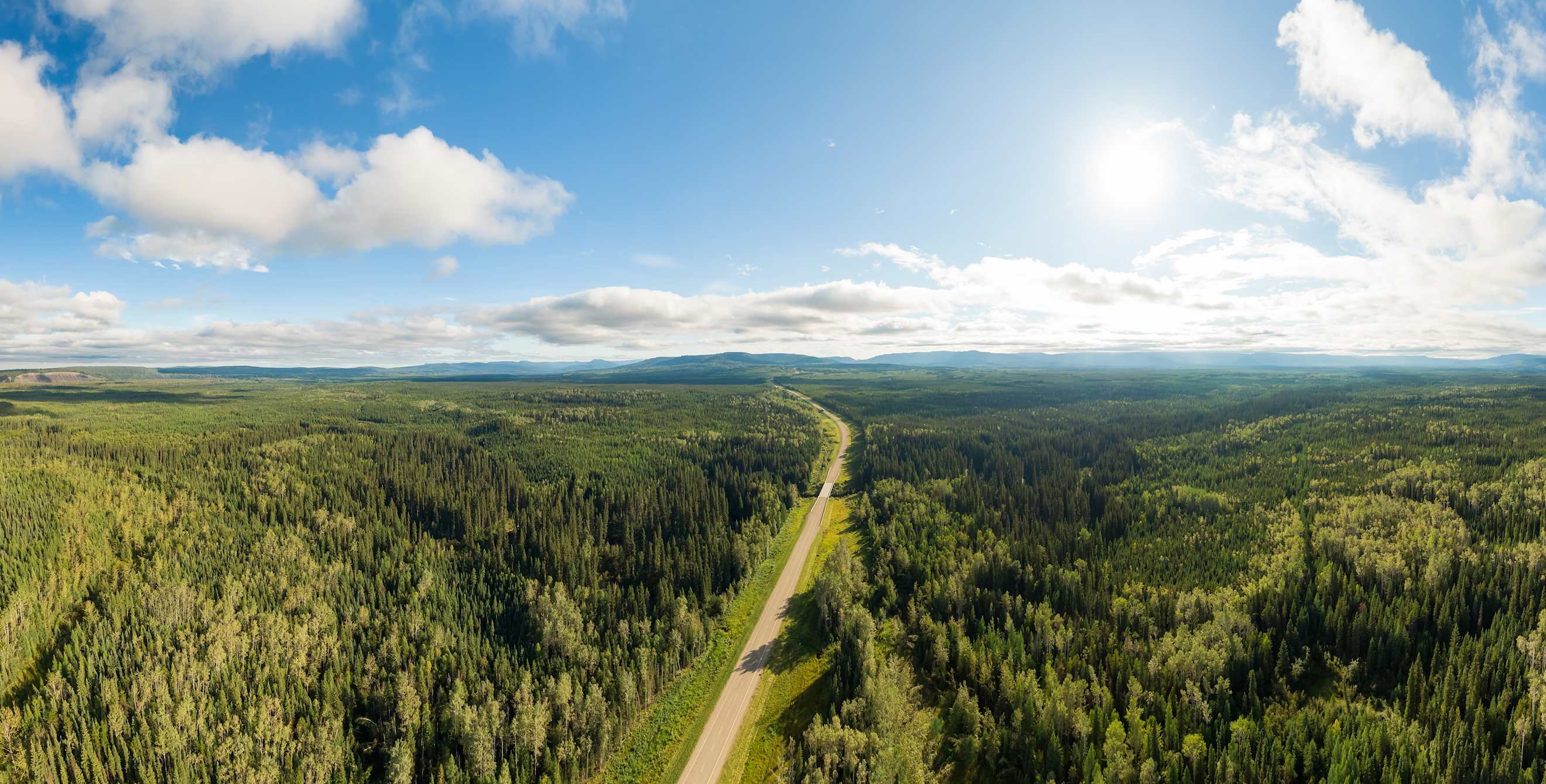
Constructed quickly and skillfully during World War II, the Alaska Highway is a 1,387-mile-long, two-lane roadway connecting the contiguous United States to Alaska across Canada. Originally built as a strategic military supply route, this herculean project took workers from the Army Corps of Engineers only eight months to complete.
Today it makes for one of North America’s most epic road trips. A mostly paved route that starts in northeastern British Columbia, it winds through mountain passes and rich boreal forest, crosses rivers, and traverses a land of subarctic alpine tundra before reaching its ending point in Delta Junction, Alaska. Between long scenic stretches, you’ll find campgrounds, service stations, lodgings and eateries, as well as a series of small towns, hiking trails, and local museums that are well worth exploring.
While it takes approximately three full days to drive the entire highway start to finish, a week is a good amount of time to take full advantage of this breathtaking journey. Many visitors also drive it in sections, such as the 430-mile stretch from Dawson Creek (a 740-mile drive northeast of Vancouver) to Muncho Lake, which crosses some of British Columbia’s most remote wilderness and offers the chance to spot resident wildlife like stone sheep, bison, bear, and moose along the roadway.
Things to note: Places to fuel up your vehicle (and your belly!) along the Alaska Highway are few and far between, and there are sections without Wi-Fi or cellphone service. Be sure to pack an emergency kit that includes water, snacks, a flashlight, and blanket, as well as first-aid essentials and jumper cables. And don’t forget your passport!
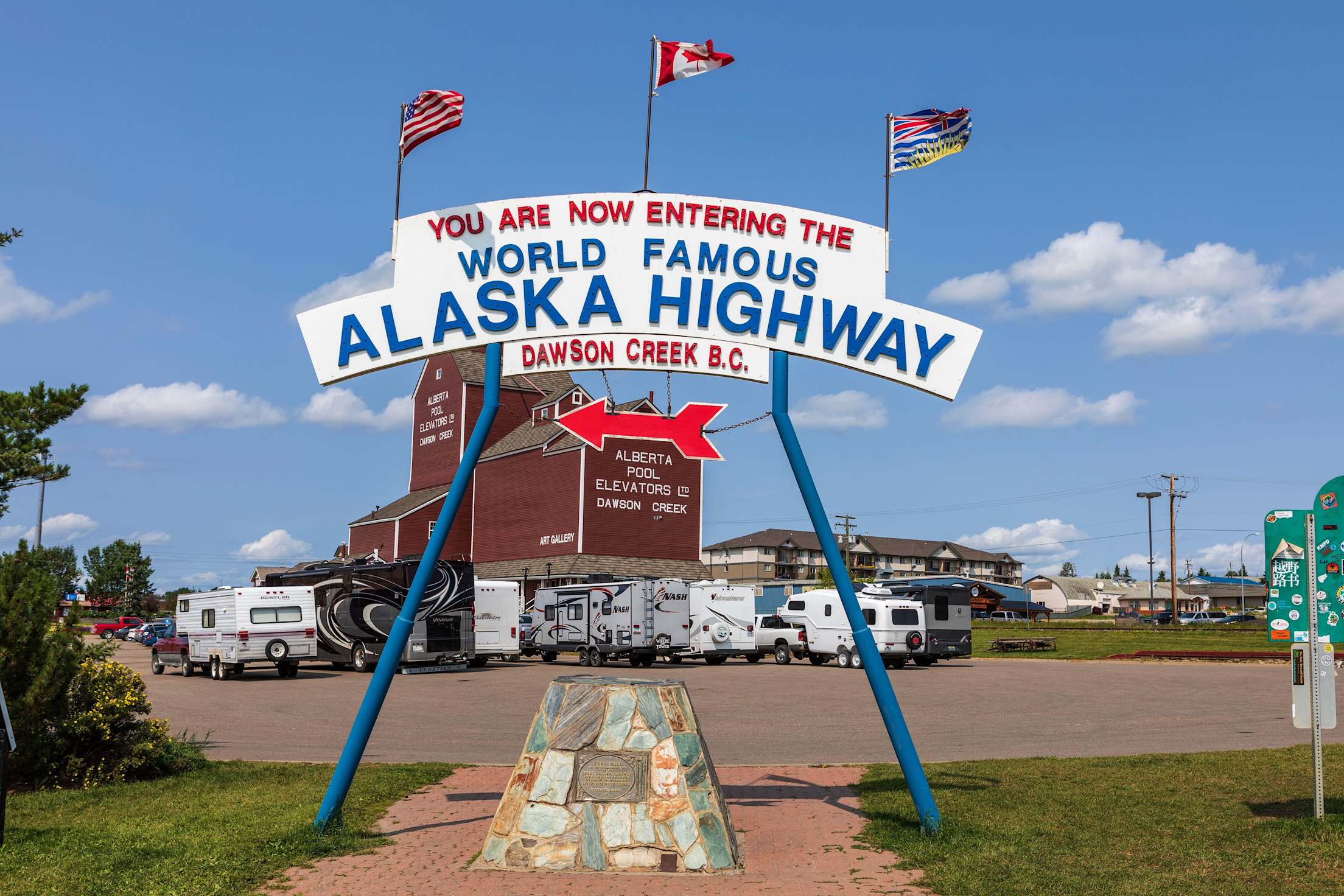
Dawson Creek, British Columbia
Start your journey at Dawson Creek, a city of approximately 12,000, residents at Mile 0 on the Alaska Highway. Snap a photo in front of the commemorative Mile 0 cairn that’s part of the larger four-acre Northern Alberta Railway Park. Here, you’ll also find a train station museum (the city was the railhead for the former Northern Alberta Railways) and the Dawson Creek Visitor Information Centre. Delve into the lives of Dawson Creek’s early pioneer settlers with a visit to the Walter Wright Pioneer Village, a mix of original and replica buildings open from May to September. Grab a falafel wrap or cajun chicken club at Post & Row Brewing Co. before hitting the open road.
Between Dawson Creek and the community of Fort Nelson, approximately 270 miles north, the road is mostly straight, with plenty of Northern Rockies scenery to take in along the way. This stretch of highway also contains its lowest point, the Muskwa River Bridge, situated 1,000 feet in elevation at highway marker 451.8 km.
Fort Nelson, British Columbia
Established as a trading post in the early 19th century, Fort Nelson is home to the Northern Rockies Regional Airport, offering round-trip flights to and from Vancouver (an alternative to driving all the way up). Catch a curling match at the Northern Rockies Regional Recreation Centre, which also houses the local visitor’s center and serves as a de facto community hub. Just across the highway, the Fort Nelson Museum is a stunning collection of antique cars and a treasure trove of taxidermied local wildlife and vintage signage. Those in town on Saturdays can load up on local baked goods and artisan crafts at the Fort Nelson Farmers Market, while Down to Earth Health Shop, open Monday through Saturday, serves up organic eats (think smoothies and wraps).
Continuing north, the highway winds through the 19 million-acre Muskwa-Kechika Management Area, one of Canada’s largest wilderness spaces. It also encompasses Summit Lake, which marks the roadway’s highest point at 4,250 feet in elevation.
Stops along this stretch include the Tetsa River Lodge, which earns points for its homemade cinnamon buns and a gift shop brimming with wool sweaters and Manitobah moccasins, and the Toad River Lodge, complete with a fueling station, laundromat, and a restaurant serving up American eats like mozzarella chicken melts and cheeseburgers. Both spots provide overnight lodging. For an easy-to-access, crowd-free hike, try the Baba Canyon Trail, within Stone Mountain Provincial Park. This 3.4-mile out-and-back trek skirts the edge of a creek and follows it upstream, passing small waterfalls, intriguing rock formations, and the occasional marmot or elk along the way.
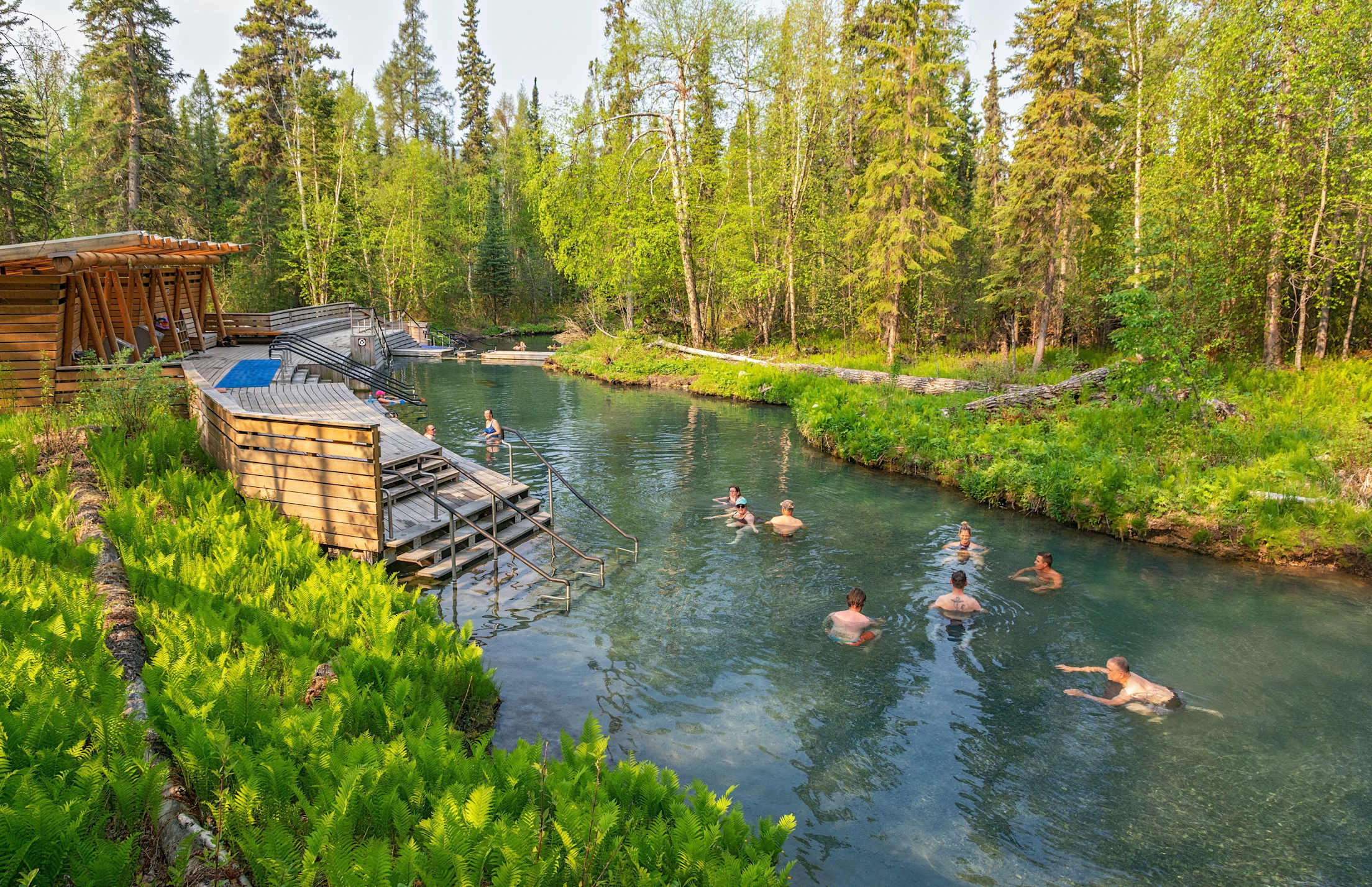
Muncho Lake, British Columbia
Known for its deep turquoise waters and impressive mountain backdrop, Muncho Lake gets its unique color from the high mineral content of its H2O. Perched on its shores is the family-owned Northern Rockies Lodge, a slice of Switzerland in the middle of British Columbia’s upper wilderness. The lodge offers floatplane tours, canoeing, kayaking, and hiking excursions. It's also a perfect pit stop for road trips up to Liard River Hot Springs, one of the largest natural hot springs in Canada. Here, you can relax weary muscles in warm, mineral-rich sulfur waters ranging from 107 degrees to 126 degrees Fahrenheit while surrounded by lush boreal forest. Afterward, return to the lodge for helpings of homemade schnitzel and crumble apple pie.
Crossing into Canada’s Yukon territory, don’t miss the Sign Post Forest. A homesick American soldier “planted” the first sign here in 1942. It’s been growing ever since, with almost 100,000 posted signs from far-away spots like Winterburg, Germany and Amarillo, Texas. Bring your own to add to the mix.
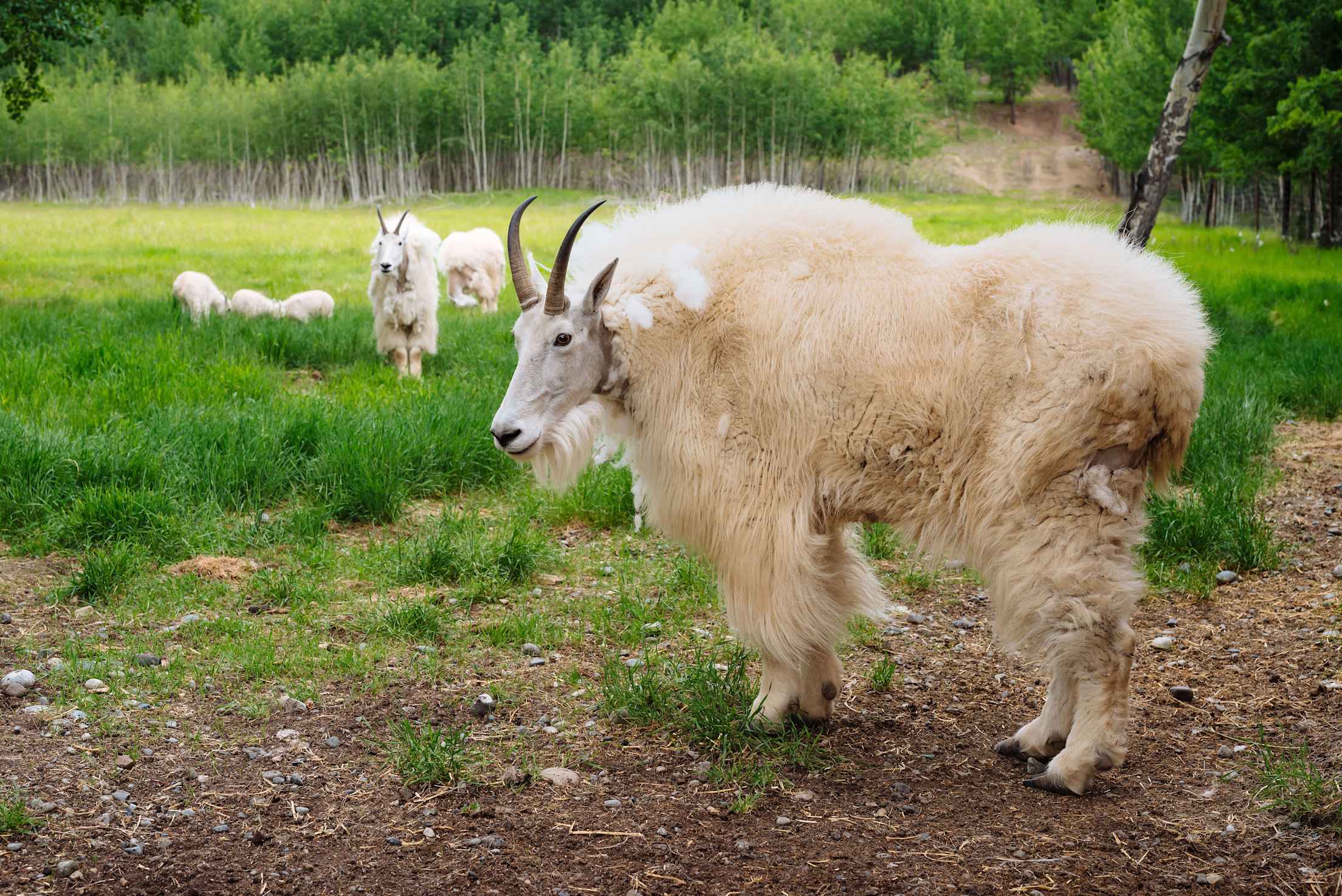
Whitehorse, Yukon
As the Yukon’s vibrant capital, Whitehorse is a hub of adventure, artisan offerings, and Klondike Gold Rush history. Watch moose and mountain goats in their natural habitat at the Yukon Wildlife Preserve, learn the stories of some of the Yukon’s most remarkable characters at the MacBride Museum of Yukon History, and experience the way of life of the local Indigenous people at the Kwanlin Dün Cultural Centre. One of Canada’s few remaining steam-powered paddlewheelers, the iconic S.S. Klondike is currently closed for restoration, but guided tours of the S.S. Klondike National Historic Site are available during open season.
Enjoy shareable plates of ahi tuna guacamole and birria beef poutine at the Gather Cafe & Taphouse, which makes its own glassware at an adjacent studio.
While continuing on towards the Alaska border, make a stop at Haines Junction. Just two hours further along the highway, it’s the gateway to Kluane National Park and Reserve—a stunning expanse of ice fields, tundra, forest, and 17 of Canada’s 20 highest peaks.
Tok, Alaska
With a population of less than 1,500, Tok is the first major Alaskan community heading north on the Alaska Highway. Get your bearings at the Tok Mainstreet Visitors Center, a massive 7,000-square-foot-lodge where you can find out about everything from horseback riding adventures to local gold panning. Tok is known as the “Sled Dog Capital of Alaska,” and is the site of several sledding competitions throughout the year. Consider a float trip along the nearby Fortymile National Wild and Scenic River, then refuel with Alaskan king crab legs and a blueberry milkshake at the casual Fast Eddy’s eatery.
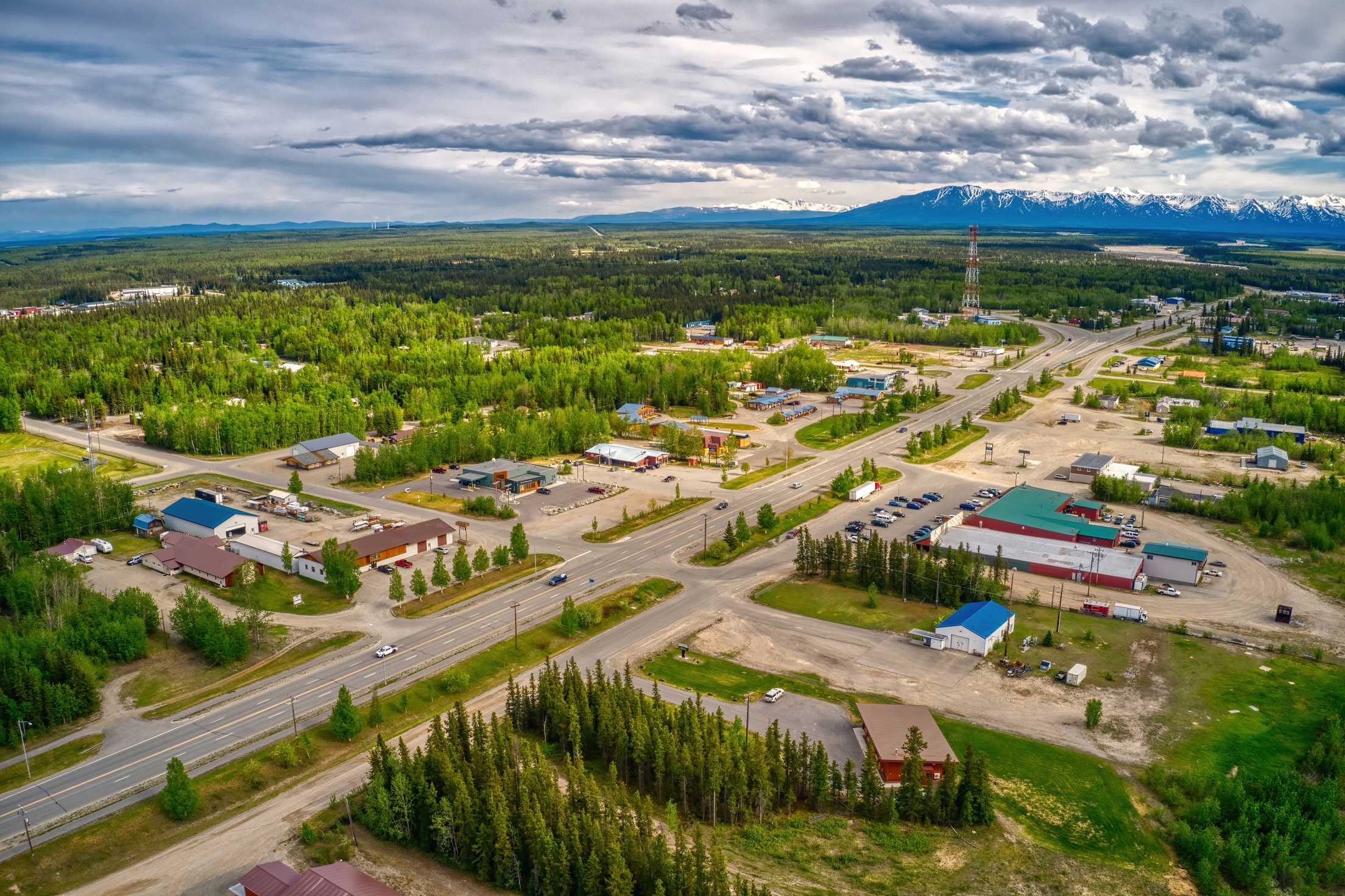
Delta Junction, Alaska
An oversized white mile marker honors this official end of the Alaska Highway. Delta Junction is also where you’ll find some of the state’s historic roadhouses, multi-purpose lodgings that catered to pioneer settlers traveling long distances. As the centerpiece for Big Delta State Historical Park, Rika’s Roadhouse was restored in the late 1970s, complete with its original kerosene crate floor. Visit mid-May to mid-September for a walking tour in and around the property, which includes a neighboring sod-roofed cabin brimming with pioneer-era artifacts. There’s also the Sullivan Roadhouse, now a museum filled with historical artifacts and photographs from the early 1900s, including hand-sawn furniture and portions of a local dairy farm. Later, celebrate the finale of your road trip with handcrafted local brews and gourmet pizzas at Delta Junction’s Big Delta Brewing Company.
Explore the Alaskan wilderness on a one-week guided tour available through AAA Travel.